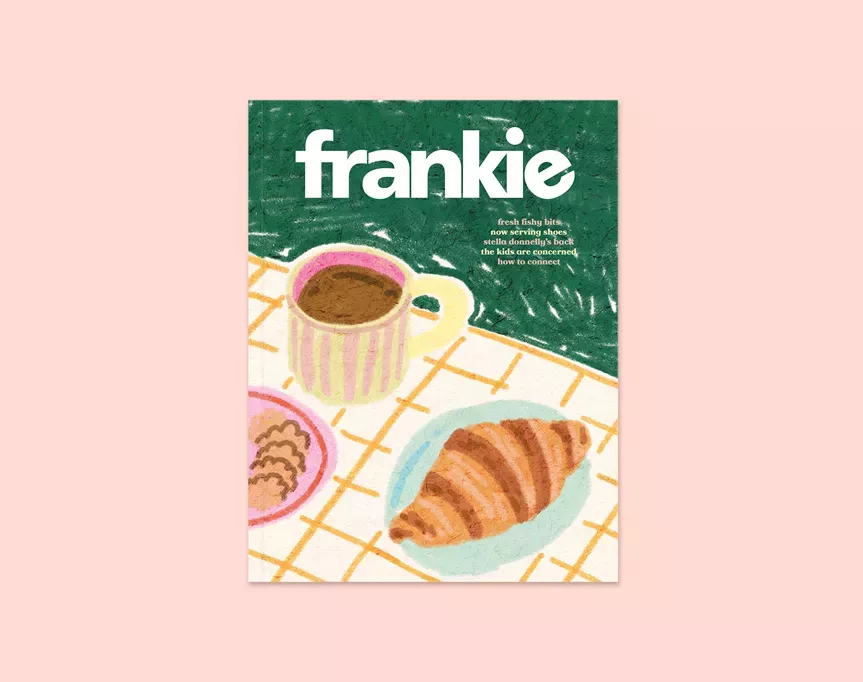superannuation in a nutshell for young people
Superannuation is important. But, getting on top of it can be a confusing (or even daunting) task. Finance whiz Victoria Devine breaks down everything young folks need to know about super.
Say you started investing at the age of 21, and you invested $500 each and every month into a share portfolio that had an average rate of return of 7.5 per cent. By the age of 60, that share portfolio might be worth $1.25 million. Of that $1.25 million, just $234,000 was your regular contributions. The other $1 million was all investment returns. You’ve made a million dollars just by being in the market for that period. Superannuation was introduced to give every Australian this type of opportunity to set themselves up for a financially secure future.
Now, as you know by now, investing isn’t a straight line forward. Your money doesn’t grow in value year after year after year; it zigzags. It goes up one year (or month, or week, or day, or hour!), down the next, flatlines for a bit, then grows again…
This is why time in the market is so valuable. If you hold your money in an investment class for long enough, you’re more likely to withstand all of the down periods and enjoy the profits of the growth periods, so you come out on top.
Superannuation is paid automatically by your employer. As of July 1st, 2022, every single employee over the age of 18 is eligible to receive super, regardless of their age, how many hours they work, whether they’re casual, part-time or full-time. Which I think is fantastic! This wasn’t always the case, as there used to be all sorts of criteria and benchmarks you had to meet in order to get paid super.
As of July 1st, 2022, the amount of super you’re entitled to is 10.5 per cent of your income. So if your earnings before tax are $1000 a week, you’re entitled to receive 10.5 per cent, or $105, deposited into your super fund at the same time. That money is then invested according to the strategy you’ve chosen within your fund. This is your superannuation guarantee, but you can also choose to add your own voluntary contributions
YOUR SUPER INVESTMENT STRATEGY
“But Victoria, hold up! I never chose a strategy. I have no idea what my fund invests in.”
If you’re thinking this, it’s likely you’ve chosen a default super fund, which usually invests in a balanced, low-risk fund. There are generally four different kinds of investment ‘risk profiles’ you can nominate within your super fund: conservative funds, balanced, growth or high growth.
Conservative funds are relatively low risk, and also aim for low returns.
Balanced funds are the most common or popular, because they aim for slightly higher returns than conservative funds, but without too much greater risk.
Growth funds are going to see you take some risks with your money, but the returns could be much higher.
High growth funds are the riskiest of the bunch, but can achieve the highest returns and profits.
The right type of investment strategy in your super fund aligns with your investment strategy overall. But when it comes to super, you also have to consider your age. If you’re 25 and you have 40 years left in the workforce, you may be able to afford to invest in a growth or high growth fund, because you have plenty of income-earning years ahead of you. Over the next 40 years, your fund can weather the ups and downs of a riskier strategy because you have plenty of time ahead of you for your returns to compound and grow. If you invest in a company that has a massive downturn, for instance, it’s not the end of the world, because you still have decades to recoup that loss.
On the other hand, if you are in your fifties or sixties and knocking on retirement’s door in the near-ish future, it might make more sense to adopt a lower-risk strategy. A balanced fund could offer you the chance to enjoy some solid profits, without the risk of a big downturn chipping away at your retirement wealth.
A COUPLE OF THOUGHTS ON CHOOSING A SUPER FUND
If you pay peanuts, you might get monkeys. You want a good super fund that supports your goals and has really good returns. Don’t just go with the cheapest fund without considering performance, and always remember that past performance isn’t an indicator of how the fund will perform in the future.
Compare apples with apples when looking at fees. It’s incredibly important to understand that all of the companies charge fees differently. Some might have a management fee, some have a funds management fee, some charge an administration fee, others charge a percentage of what you contribute each year. Make sure you look for the total sum of all the fees when comparing funds.
FUND TYPES
As well as the type of investment strategy, the other decision you should make is the type of fund you want. There are literally dozens of super funds to choose from, and they all charge different fees and achieve different investment returns on your money.
The main types of super funds to choose from are:
Industry funds: These funds usually focus on a particular industry, like retail or hospitality, but they’re open to all Australians. If you’ve ever worked for a restaurant or cafe, there’s a good chance you have (or had) a HostPlus Super policy. Another big one is Australian Super. All profits they make go back into the fund to benefit new and existing members.
Retail funds: These are funds that are owned by a bank, insurance provider or another large financial institution. They are for-profit funds, so any profits they make are split between members and shareholders. Examples include BT Super (owned by Westpac) and Colonial First State (owned by CommBank).
Member-owned funds: These are similar to industry funds, however, they’re not part of the official Industry Super Funds group. Plus, some of these funds might be reserved for people in a particular state or industry – like UniSuper, for example, which provides superannuation services to employees within the higher education and research sector in Australia. With over 450,000 members, it’s got a cool $100 billion in assets.
SETTING UP A FUND
Now, you might be reading along right now, thinking, “This all seems difficult and boring, but the stakes seem too high for me to park it in the ‘too hard’ basket any longer.” If so, you’re like a huge chunk of Australians who switch off when it comes to super. You’re not alone, so don’t beat yourself up about it. I’m proud of you for taking the proactive choice of reading this book – we can fix this!
This may sound complicated, but honestly, these are decisions you only have to make once. To set up your fund, you simply need to:
1. Find the fund that best suits your needs and goals. It’s a bit of work and I’d recommend seeing an adviser BUT if you want to DIY, I suggest looking at the super comparison tool on the ATO website. Make sure that the fund offers the risk profile that suits you!
2. Apply for a new fund – this takes a couple of minutes and can be done online.
3. Roll all of your existing funds into it – you can do a rollover from your MyGov account.
4. Then simply revisit your fund every year or two, to make sure the choices you’ve made still align with your goals.
To get your super in tip-top shape, check out these free tools online that allow you to calculate and project your super into the future, comparing the impact of different contributions and investments.
Search for any lost super here.
Compare super options here.
Get help choosing the right super fund here.
Project your super balance for the future here. This is an extract from Investing with She’s on the Money by Victoria Devine. Published by Penguin Random House Australia, RRP $32.99. Learn more from Victoria at her upcoming live shows in Sydney, Melbourne and Brisbane.
This is an extract from Investing with She’s on the Money by Victoria Devine. Published by Penguin Random House Australia, RRP $32.99. Learn more from Victoria at her upcoming live shows in Sydney, Melbourne and Brisbane.












.jpg&q=80&w=316&c=1&s=1)













.jpg&q=80&w=316&c=1&s=1)










